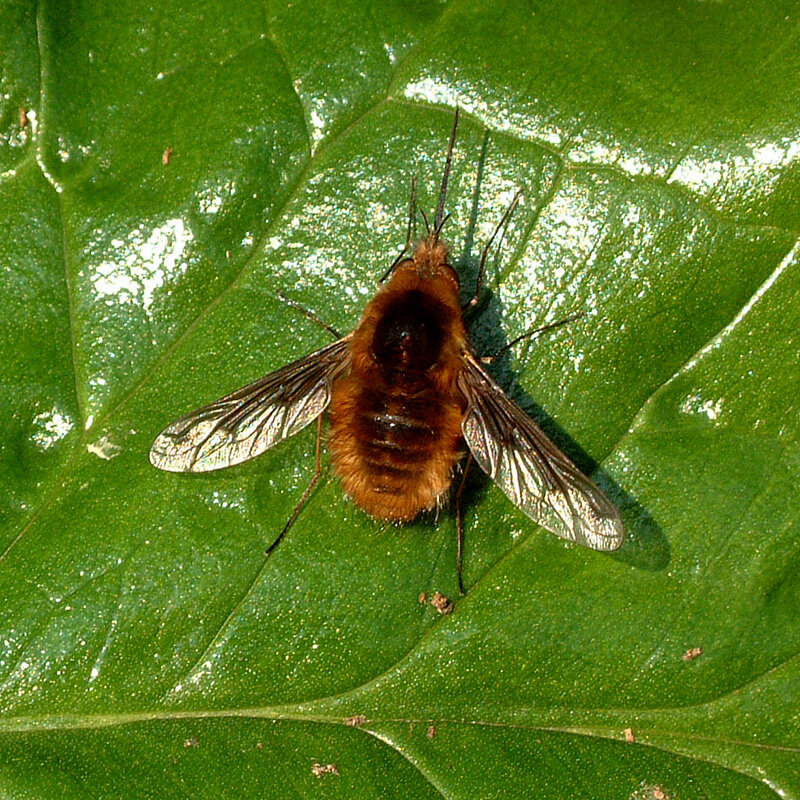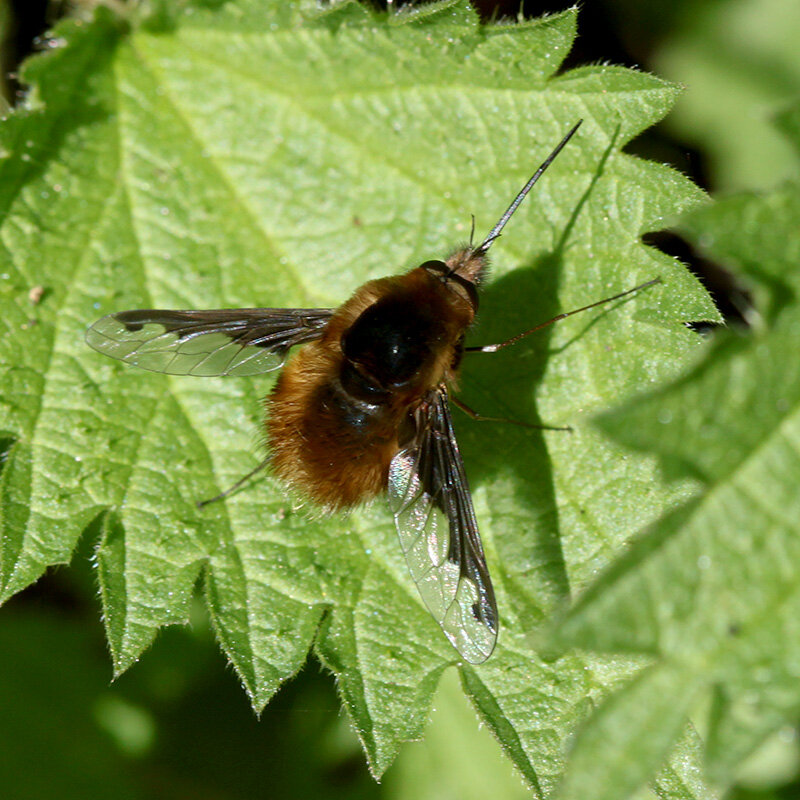Bombylius major
Bee-flies are very strange looking invertebrates. The adult bee-fly has a round fluffy body, long spindly hairy legs, patterned wings, and an extremely long proboscis (or tongue). It physically mimics a bee and it also has a high pitch hum, but is in fact a fly. Their appearance is a definite sign that spring has arrived.
Bee-flies tend to hover over flowers and feed on them using their long tongue. When resting, they hold their wings out at a wide angle; and unlike bees, when they feed they perch on the flower with their long legs. Another difference is that they have a single pair of wings, whilst bees have two pairs.
Bee-flies probably mimic bees in order to look more dangerous than they are so predators give them a wide berth. It also helps them get close to the nests and burrows of their host species. The fly does not bite, sting or spread disease, they are completely harmless to humans.
Dark-edged bee-flies can be distinguished from other Bombylius bee-flies by the strong dark-brown front edge of each wing (hence its name!). They are a medium sized fly measuring 6.3–12 mm in length, and their proboscis measures a whopping 5.5 to 7.5 mm in length. Males’ eyes touch on top of their head whereas females’ eyes are much more separated.
What they eat
Bee-flies are all parasitoids of solitary bees (such as Andrena spp.) and wasps. Female bee-flies hover a few inches above mining bee nesting areas and flick their eggs onto the ground. They coat the eggs with dust before they are laid to provide camouflage and possibly add weight to them. After hatching, their larvae crawl into the nest further and consume the baby bees underground, before pupating and emerging from the burrows as adults the following spring.
The adults’ proboscis is adapted to drink the nectar from a wide variety of early-flowering plants such as primrose, bugle, blackthorn, and cherry blossom. They are very important pollinating insects.
Where and when to see them
These bee-flies are often found in gardens, allotments and deciduous woodland.
They are early season fliers can be spotted from March (sometimes even February) to the end of May.
Watch out for them on warm sunny days.
View a dark-edged bee-fly 10km distribution map of Wales
Similar species
The other bee-flies are much rarer in the UK and do not have the dark edge along the front of the wings. The dotted bee-fly (Bombylius discolour) has spots along its wings, and the females have a row of white dots along the top of the abdomen. The Western bee-fly (Bombylius canescens) flies later in the season (early May to mid August). It is buff-brown in colour, and has clear wings and black bristles behind the eyes.
Watch out for bees, they can be easily confused with bee-flies – they have longer antennae and clear wings. They also have shorter, thicker and hairier legs.
Did you know?
In parts of East Anglia, bee-flies are known as beewhals due to their long straight (tusk-like) proboscis.
Other surveys


